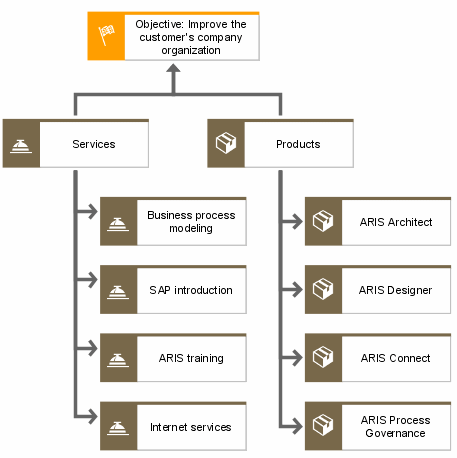Product/Service tree
Products or services can be looked at from different levels of abstraction. Therefore, it is useful to store the relationships in a model showing which product or service components are making up a complete product or service. This static aspect is represented in the product/service tree. For example, a complex product often contains several modules, each of which has various component parts. Each of these elements can be understood as a product or service.
The has relation with connection, which is also permitted between products or services in the product/service tree, can be used to describe other kinds of dependencies. These include the relationship between a consumer credit and the checking account through which the payments are effected.
Substitution relationships to other products or services such as (potential) replacement products or services can also be represented.
This static model also represents the interrelationship between products or services and the (business) objectives.
The following figure illustrates an example of a product/service tree.

